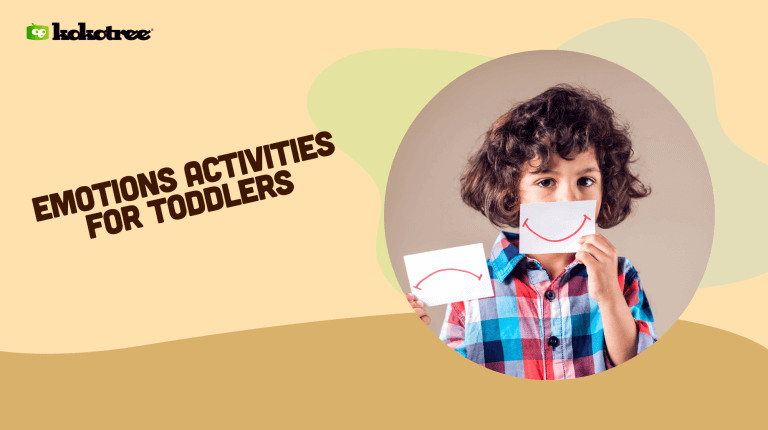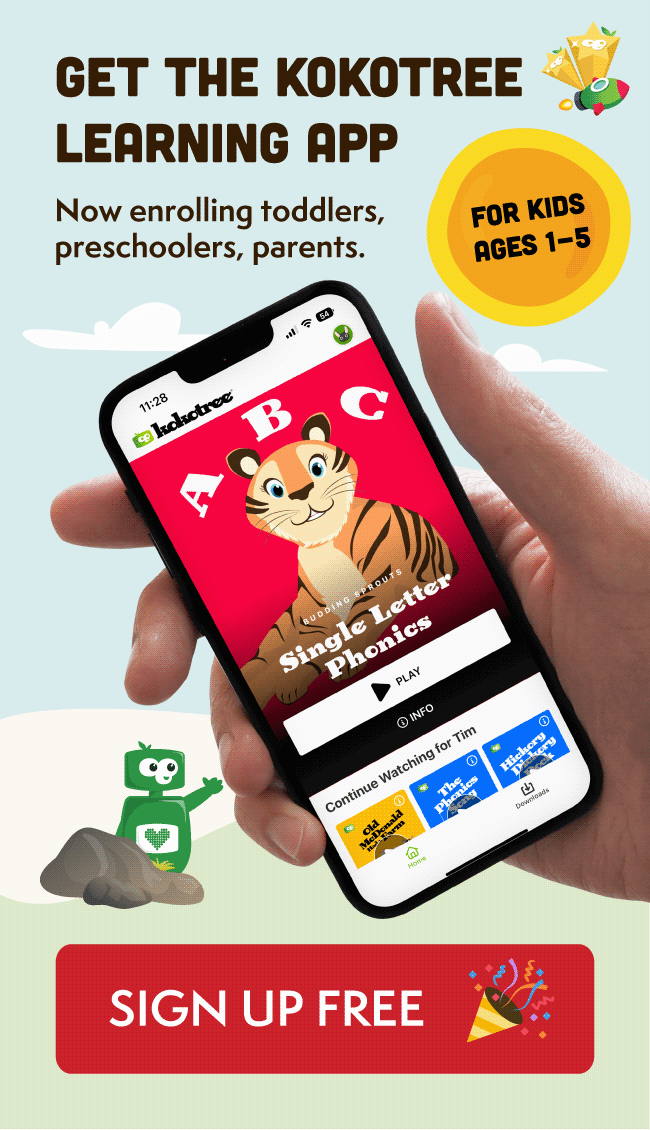

Welcome to our blog post on ‘Emotions Activities for Toddlers’! As a parent of a little one, you might be looking for ways to help your toddler recognize and express their emotions effectively. In this post, we’ll be sharing some fun and engaging activities and games that not only teach your child about different feelings but also help them learn how to cope with them. By using evidence-based advice and maintaining an organized structure, our goal is to provide you with helpful solutions in a friendly, empathetic, and concise manner. So, let’s dive in and explore these exciting activities together!
Emotions Activities for Toddlers are engaging games and exercises that help young children recognize, understand, and express their feelings in a healthy way. These activities often involve storytelling, role-playing, creating a feelings chart, or playing emotion-themed games. The purpose of these activities is to teach toddlers about different emotions, offer them strategies for coping with challenging feelings, and assist them in fostering empathy and communication skills.
A great way to start teaching toddlers about different emotions is by creating a Feeling Faces Chart. For this activity, you’ll need some colored paper or a large poster board, markers, and some reference images of various emotions.
After preparing the chart, you can use it in various activities like:- Asking your child to point out the emotion they’re feeling at different moments of the day.- Encourage your toddler to imitate the faces and discuss how their body feels when experiencing each emotion.
Storytelling is an essential part of early childhood education, helping children learn and grow on multiple levels. Make storytime more engaging by reading books that focus on emotions and feelings. There are numerous books available that can teach children about emotions by telling a fun story with relatable characters.
The Emotion Storytime Sessions can teach your child to empathize with others and understand the emotions they may encounter in their lives. Remember to emphasize the importance of discussing emotions and seeking comfort or help when needed.
Role-playing is an effective way to teach toddlers about emotions by allowing them to act out different scenarios. It enables children to express their feelings and practice appropriate ways to cope with various emotions.
Role-playing allows children to experience different emotions in a safe and controlled environment, helping them understand how to manage their feelings better.
Arts and crafts encourage creativity and emotional expression for toddlers. By incorporating emotion-based elements into art projects, children can communicate their feelings in a fun and tangible way.
Crafting not only stimulates creativity but also opens up opportunities for emotional exploration, self-expression, and bonding between parents and children.
Music is a powerful tool in evoking emotions and creating connections between feelings and melodies. Create a playlist of songs that represent different emotions, and encourage your toddler to dance, sing, or move to the music based on how it makes them feel.
Musical Emotions activities strengthen the connection between feelings and sounds, making it easier for your toddler to recognize emotions in themselves and others.
Matching games are a fun and educational way to build memory and recognition skills. By incorporating emotion-themed elements, children can practice identifying emotions while building cognitive abilities.
Matching games with emotion themes contribute to a deeper understanding of different feelings and encourage cognitive development through play.
Dancing and engaging in physical activities allows toddlers to express their emotions through movement. By being aware of their body, children can better recognize the emotions they’re feeling and eventually learn how to manage them.
Expressing emotions through movement aids in emotional growth and physical development, allowing your toddler to learn about their feelings in a fun and engaging way.
In today’s digital age, integrating technology in early childhood education can provide a new dimension to learning. Some learning apps for toddlers offer emotion-specific activities, games, and stories that can help young children recognize and express their feelings.
Using learning apps that focus on emotions can enhance your toddler’s emotional development by providing them with interactive and engaging experiences.
Emotions play a significant role in your toddler’s development, and it’s essential to introduce activities and games that teach them about different feelings and coping mechanisms. By incorporating the activities mentioned above, you’re helping your child grow into an emotionally intelligent and empathetic individual. Remember, as a parent, you are their primary source of learning and support, so fostering an open and understanding environment is key to their emotional development.
Besides the emotion activities mentioned earlier, there are several other practices and ideas you can incorporate into your toddler’s daily life. By doing so, you’ll ensure a well-rounded approach to emotional development and create a strong foundation for your child’s growth.
Encourage open and honest conversations about feelings with your toddler. Listen attentively to their thoughts and emotions, and validate their experiences. Having regular discussions about emotions will not only help them feel understood but also enable them to express their feelings with confidence and ease.
As your child’s primary role model, it’s essential to demonstrate appropriate emotional management. Show your toddler how to cope with tricky emotions in a controlled and calm manner. Practice patience, empathy, and understanding, and your child will likely follow your example.
Provide a supportive, nurturing, and emotionally safe environment for your child. Offer comfort, reassurance, and love when they express their feelings or face new challenges. Your continuous support will instill confidence and allow them to trust their emotions, paving the way for a well-rounded emotional development.
Teach your toddler empathy by frequently discussing emotions in daily interactions. For instance, point out someone’s feelings on the playground or during a family gathering, and ask your child how they think that person may feel. Helping your child understand and empathize with others’ emotions will foster compassion and positive social skills.
Introduce different resources to teach emotions, such as educational games, toys, and books. Diversifying the tools used in toddler education will help engage your child and create a deeper understanding of emotions. Remember, the more age-appropriate tools you incorporate, the more your child will benefit from and enjoy the learning experience.
Play is a critical aspect of a child’s development, and it can be utilized for teaching emotions effectively. Create play scenarios that involve emotions or select toys that encourage emotional growth, such as dolls with various expressions or emotion flashcards. Encourage your toddler to explore their feelings through play and equip them with the tools necessary for healthy emotional expression.
Incorporating additional practices and strategies into your child’s daily life will significantly impact their emotional education. By using various approaches to teaching emotions, you’ll contribute to their overall development and ensure that your child grows into a confident, empathetic, and emotionally intelligent individual.
In this FAQ section, we have compiled a list of common questions parents may have while reading the blog post. These questions cover various aspects of emotional activities for toddlers, providing you with answers and guidance to help in your child’s emotional development journey.
It’s never too early to start teaching your child about emotions. Begin introducing basic concepts about feelings as soon as your child starts showing signs of understanding and communication, usually around 18 months to 2 years of age. As your child grows, continue expanding their emotional vocabulary and understanding.
Initially, focus on basic emotions such as happiness, sadness, anger, fear, and surprise. These emotions provide a good foundation for understanding more complex feelings as your child develops emotionally and cognitively.
Yes, the activities mentioned in the blog post can be beneficial for children with social-emotional challenges or delays. However, it’s essential to customize the activities to suit your child’s specific needs and consider seeking professional advice from an expert in early childhood education or therapy.
Ideally, engage your child in emotion-related activities throughout the week, interspersed with other learning experiences. Consistency and repetition are essential for reinforcing emotional concepts and developing a deep understanding of feelings.
Offer them constant reassurance, empathy, and support. Practice active listening and encourage open discussions about feelings. Consider using visual aids or resources like emotion flashcards to facilitate communication and expression. If necessary, consult a professional to determine if additional intervention may be helpful.
Yes, involving siblings in these activities can benefit each child’s emotional growth and foster positive relationships between them. Encourage older siblings to assist in explaining emotions and guiding the younger child through emotion-based games and activities.
There are many resources available for teaching emotions, including children’s books, educational television programs, websites, and workshops focused on emotional intelligence for children. Local libraries, community centers, and parenting resources can also provide valuable information.
Observe and document their ability to recognize, express, and manage their emotions, as well as their empathy and social interactions. Regularly assess their progress and make adjustments to the activities and techniques as needed to support their ongoing emotional growth.
Yes, even toddlers with limited language skills can benefit from learning about emotions. You can use visual aids, gestures, facial expressions, and body language to teach them about feelings. As your child’s language skills develop, gradually introduce emotion-related vocabulary.
First, validate their feelings and provide comfort. Teach them coping strategies, such as deep breathing exercises, counting, or seeking help from a trusted adult. Encourage open discussions about their emotions and emphasize the importance of expressing feelings appropriately.
It’s essential for children to learn appropriate ways to express their emotions, even in public. Set boundaries and discuss acceptable forms of emotional expression in different settings. Proactively address potential triggers for negative emotions and prevent outbursts when feasible.
Model empathy and engage in open conversations about feelings with your child. Read stories featuring characters experiencing various emotions and discuss how those characters feel. Encourage your child to observe others’ facial expressions, body language, and tone of voice to recognize emotions.
Absolutely! Integrating emotion activities with other types of learning, such as literacy or problem-solving skills, can enhance your child’s overall development and create a holistic approach to early childhood education.




